Related Research Articles

The University of North Carolina is the multi-campus public university system for the state of North Carolina. Overseeing the state's 16 public universities and the NC School of Science and Mathematics, it is commonly referred to as the UNC System to differentiate it from its flagship, UNC-Chapel Hill.

The University of North Carolina at Chapel Hill is a public research university in Chapel Hill, North Carolina. It is the flagship of the University of North Carolina system. After being chartered in 1789, the university first began enrolling students in 1795, making it one of the oldest public universities in the United States.

Orange County is a county located in the Piedmont region of the U.S. state of North Carolina. As of the 2020 census, the population was 148,696. Its county seat is Hillsborough.

The University of North Carolina Asheville is a public liberal arts university in Asheville, North Carolina, United States. UNC Asheville is the designated liberal arts institution in the University of North Carolina system. It is a member and the headquarters of the Council of Public Liberal Arts Colleges.
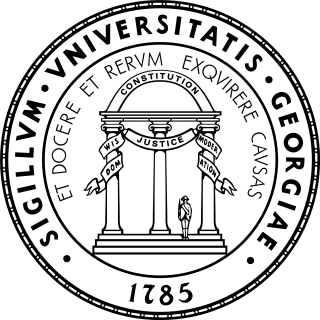
The University of Georgia is a public land-grant research university with its main campus in Athens, Georgia. Chartered in 1785, it is one of the oldest public universities in the United States. It is the flagship school of the University System of Georgia.

The University of North Carolina at Charlotte is a public research university in Charlotte, North Carolina. UNC Charlotte offers 24 doctoral, 66 master's, and 79 bachelor's degree programs through nine colleges. It is classified among "R2: Doctoral Universities – High research activity".

The Province of North Carolina, originally known as Albemarle Province, was a province of Great Britain that existed in North America from 1712 to 1776.(p. 80) It was one of the five Southern colonies and one of the thirteen American colonies. The monarch of Great Britain was represented by the Governor of North Carolina, until the colonies declared independence on July 4, 1776.

Frank Porter Graham was an American educator and political activist. A professor of history, he was elected President of the University of North Carolina at Chapel Hill in 1930, and he later became the first President of the consolidated University of North Carolina system.
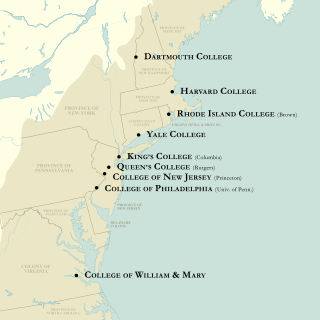
The colonial colleges are nine institutions of higher education chartered in the Thirteen Colonies before the United States of America became a sovereign nation after the American Revolution. These nine have long been considered together, notably since the survey of their origins in the 1907 The Cambridge History of English and American Literature.
"Public Ivy" is an informal term to refer to public colleges and universities in the United States that are perceived to provide a collegiate experience on the level of Ivy League universities. There is no trademark for the term, and the list of schools associated with the classification has changed over time.
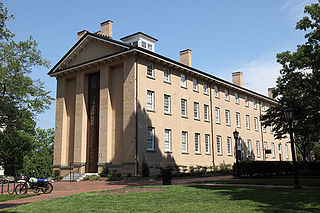
Old East is a residence hall located at the north part of campus in University of North Carolina at Chapel Hill. Built in 1793 by Slave Labor, it became the first state university building in the United States. The Wren Building at the College of William & Mary in Williamsburg, Virginia, was built in 1695, but William and Mary did not become a public university until 1906.

The South's Oldest Rivalry is the name given to the North Carolina–Virginia football rivalry. It is an American college football rivalry game played annually by the Virginia Cavaliers football team of the University of Virginia and the North Carolina Tar Heels football team of the University of North Carolina at Chapel Hill. Both have been members of the Atlantic Coast Conference since 1953, but the Cavaliers and Tar Heels have squared off at least fifteen more times than any other two ACC football programs. Virginia and North Carolina also have extensive rivalries in several other sports.

The Dialectic and Philanthropic Societies, Inc. commonly known as DiPhi or The Societies, are the original collegiate debating societies at the University of North Carolina at Chapel Hill, and together comprise the oldest student organization at the University, as well as the oldest public student organization in the United States. During the academic year, the Societies hold regular meetings at 7:30 PM on Mondays in the Dialectic Chamber at the top of the New West Building. The Societies also hold occasional social events in the Philanthropic Chamber at the top of New East Building.

First university in the United States is a status asserted by more than one U.S. university. When the Philippines was still a United States territory, the University of Santo Tomas, which was established in 1611, was considered the oldest university under the American flag. Presently in the United States, there is no official nationwide definition of what entitles an institution to be considered a university versus a college while differing official definitions are used at the state level, and the common understanding of university has evolved over time. The 1911 Encyclopædia Britannica describes the gradual emergence of U.S. universities as follows:
In the United States the word university has been applied to institutions of the most diverse character, and it is only since 1880 or thereabouts that an effort has been seriously made to distinguish between collegiate and university instruction; nor has that effort yet completely succeeded. Harvard, William and Mary, and Yale. .. were organized. .. on the plans of the English colleges which constitute the universities of Oxford and Cambridge. Graduates of Harvard and Yale carried these British traditions to other places, and similar colleges grew up in New York, New Jersey, Pennsylvania, New Hampshire and Rhode Island.... Around or near these nuclei, during the course of the 19th century, one or more professional schools were frequently attached, and so the word university was naturally applied to a group of schools associated more or less closely with a central school or college. Harvard, for example, most comprehensive of all, has seventeen distinct departments, and Yale has almost as many. Columbia and Penn have a similar scope. In the latter part of the 19th century Yale, Columbia, Princeton and Brown, in recognition of their enlargement, formally changed their titles from colleges to universities.
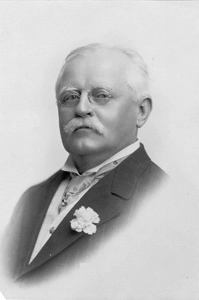
Julian Shakespeare Carr was an American industrialist, philanthropist, and white supremacist. He is the namesake of the town of Carrboro, North Carolina.
The following is a timeline of women's colleges in the United States. These are institutions of higher education in the United States whose student population comprises exclusively, or almost exclusively, women. They are often liberal arts colleges. There are approximately 35 active women's colleges in the U.S. as of 2021.
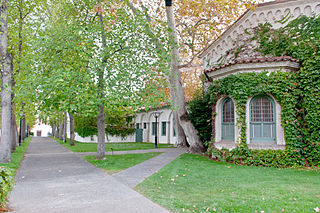
Women's colleges in the United States are private single-sex U.S. institutions of higher education that only admit female students. They are often liberal arts colleges. There were approximately 26 active women's colleges in the United States in 2023, down from a peak of 281 such colleges in the 1960s.

A state university system in the United States is a group of public universities supported by an individual state, territory or federal district. These systems constitute the majority of public-funded universities in the country.

The University of North Carolina Press, founded in 1922, is a university press associated with the University of North Carolina. It was the first university press founded in the Southern United States. It is a member of the Association of University Presses (AUPresses) and publishes both scholarly and general-interest publications. UNC Press supports the University of North Carolina through publishing books and journals It receives financial support from the state of North Carolina and an endowment fund Its main offices are located in Chapel Hill.

The University of North Carolina at Chapel Hill is a coeducational public research university located in Chapel Hill, North Carolina, United States. It is one of three schools to claim the title of the oldest public university in the United States. The first public institution of higher education in North Carolina, the school opened on February 12, 1795.
References
- ↑ Boney, F. N. (2000). A Pictorial History of the University of Georgia. University of Georgia Press. p. 3. ISBN 978-0-8203-2198-1.
- ↑ Boney 2000, p. ix.
- ↑ Reed, Thomas Walter. History of the University of Georgia. pp. 61–62 – via Digital Library of Georgia.
- ↑ Boney 2000, p. 3.
- ↑ Reed, Thomas Walter. History of the University of Georgia. p. 90 – via Digital Library of Georgia.
- ↑ "Article 41". Constitution of North Carolina. December 18, 1776. Retrieved July 7, 2017.
- ↑ "The Carolina Story: A Virtual Museum of the University History". museum.unc.edu. University of North Carolina. Retrieved July 7, 2017.
- ↑ "Historical Chronology of William & Mary". College of William & Mary. Retrieved July 7, 2017.